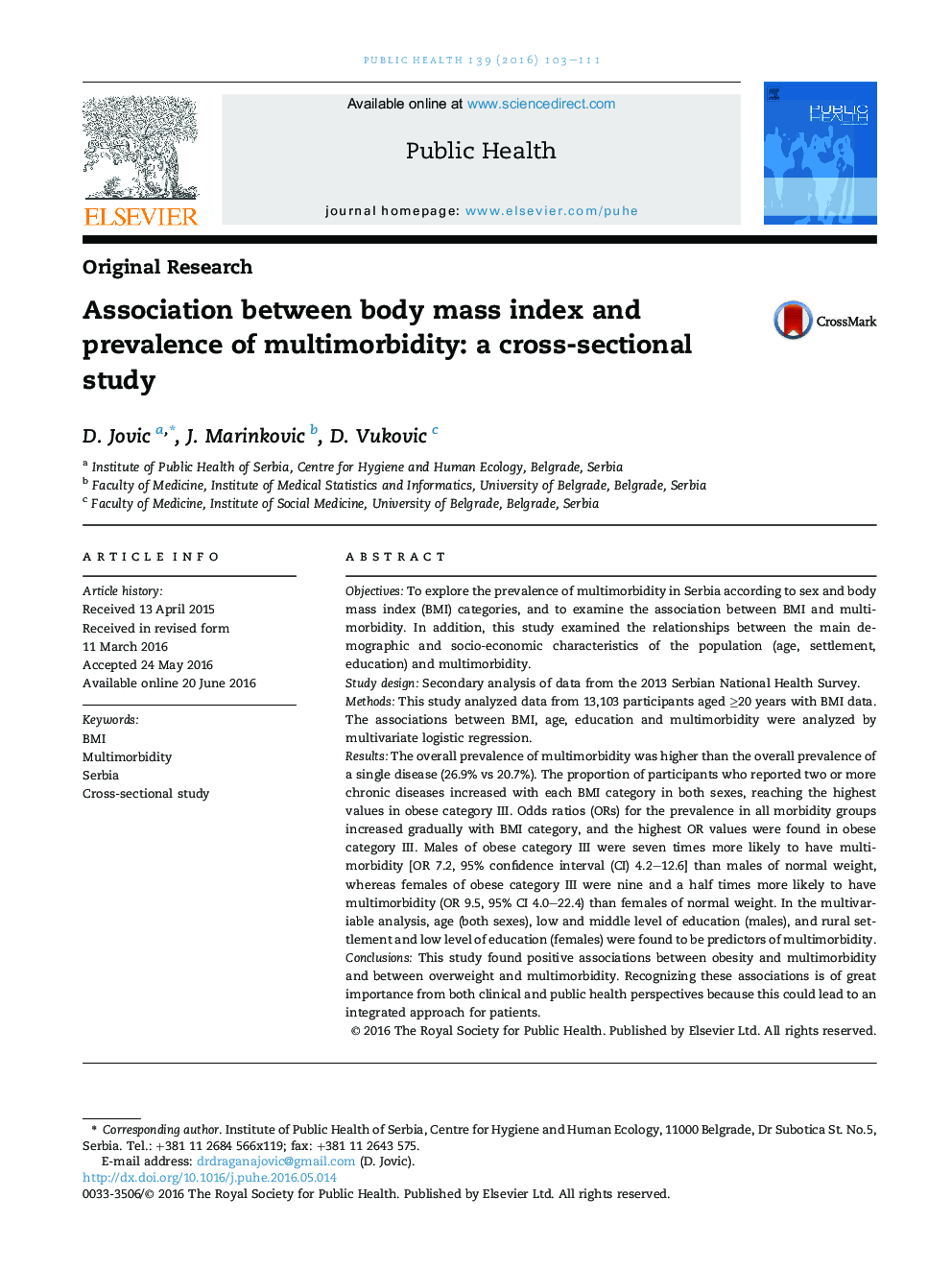| Article ID | Journal | Published Year | Pages | File Type |
|---|---|---|---|---|
| 5122929 | Public Health | 2016 | 9 Pages |
â¢We explored the prevalence of multimorbidity according to gender and BMI categories.â¢We examined the association between BMI and multimorbidity.â¢The prevalence of multimorbidity was significantly higher in women than in men.â¢Positive association was found between obesity and multimorbidity, and with overweight.â¢ORs for the prevalence of multimorbidity were the highest in obesity category III.
ObjectivesTo explore the prevalence of multimorbidity in Serbia according to sex and body mass index (BMI) categories, and to examine the association between BMI and multimorbidity. In addition, this study examined the relationships between the main demographic and socio-economic characteristics of the population (age, settlement, education) and multimorbidity.Study designSecondary analysis of data from the 2013 Serbian National Health Survey.MethodsThis study analyzed data from 13,103 participants aged â¥20 years with BMI data. The associations between BMI, age, education and multimorbidity were analyzed by multivariate logistic regression.ResultsThe overall prevalence of multimorbidity was higher than the overall prevalence of a single disease (26.9% vs 20.7%). The proportion of participants who reported two or more chronic diseases increased with each BMI category in both sexes, reaching the highest values in obese category III. Odds ratios (ORs) for the prevalence in all morbidity groups increased gradually with BMI category, and the highest OR values were found in obese category III. Males of obese category III were seven times more likely to have multimorbidity [OR 7.2, 95% confidence interval (CI) 4.2-12.6] than males of normal weight, whereas females of obese category III were nine and a half times more likely to have multimorbidity (OR 9.5, 95% CI 4.0-22.4) than females of normal weight. In the multivariable analysis, age (both sexes), low and middle level of education (males), and rural settlement and low level of education (females) were found to be predictors of multimorbidity.ConclusionsThis study found positive associations between obesity and multimorbidity and between overweight and multimorbidity. Recognizing these associations is of great importance from both clinical and public health perspectives because this could lead to an integrated approach for patients.
